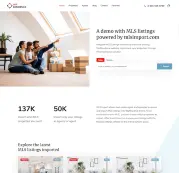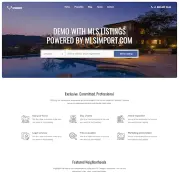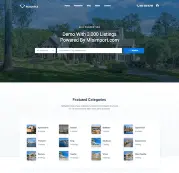Introduction
Building a real estate website can be really easy or very difficult, depending on whom you ask. What is the difference? Let’s say you started building your website or you opted to work with a team of developers. Your website’s finally done and looking great, but it’s lacking one important thing – listings.
You can either wait for owners to start adding real estate listings on your website or try to add the listings yourself manually – but both these options are very time-consuming and ineffective.
Luckily enough, there is a third way to populate your website with thousands of real estate listings in just minutes – the Bridge Interactive API, which is based on the RESO standard.
If you have already heard about RETS or are using it, you have probably heard about the RESO Web API.
But why switch from RETS to RESO? Although RETS has been the standard of data transport for close to two decades, it is no longer being supported or updated. Many MLSs have switched over to using the RESO Web API instead of RETS.
Let’s take a closer look at the advantages of using this API, which uses RESO technology:
– RESO allows for easier and more flexible data retrieval. The technology itself is very familiar to all software developers, regardless of the industry they work in.
– Data can be requested in real-time without having to replicate the entire dataset.
– Excellent documentation is available. The API Explorer can be used to inspect data and build queries without having to write any code.
– Since the system uses standardized API functionality and field names, seamless integration between multiple MLSs is possible. There is no need to check the different fields on multiple datasets anymore.
Bridge Interactive API FAQ:
Is the Bridge API RESO compliant?
Yes, the Bridge Interactive API is RESO compliant. Apart from that, all data is standardized to RESO Data Dictionary specifications.
What data can be retrieved with the API?
All listing data from the MLS can be retrieved with the Bridge API. That being said, the MLS itself will decide what data is available for you.
Can I integrate other MLSs as well?
Yes, integrating multiple MLSs is possible with the Bridge API, even MLS from Canada.
How often is the MLS listing data refreshed?
Usually, and depending on the MLS, the data is refreshed every 10 minutes.
If you have other questions about MLS, you may consult our extensive guide: What is Multiple Listing Service ( MLS ) in Real Estate and How Does It Work?
Importing listings from the Miami Association of REALTORS with the Bridge API
The Bridge API was developed by Bridge Interactive, a company partnered with the Miami Association of REALTORS. Let’s look at the steps you need to take before you can import listings.
1. Create an account on the Bridge Agreement Management platform. Once you have created your account, you may also have to enter payment details.
2. After completing the agreement, you will be able to create a Bridge Interactive API account. By completing the registration, you will automatically request API access to MiamiRE.
3. You will receive a confirmation link via email. Once you confirm your email, you will be able to access the Bridge API dashboard.
4. when MiamiRE approves your API data access request, you will receive an email. You will then be able to copy any data they have selected to be available to you.
5. Install your favorite Real Estate WordPress Theme and use MlsImport to populate your website with properties from the Miami Association of Realtors.
Useful Links:
Miami Association of Realtors MLS
Multiple Listing Services (MLS) in Florida
Table of Contents





